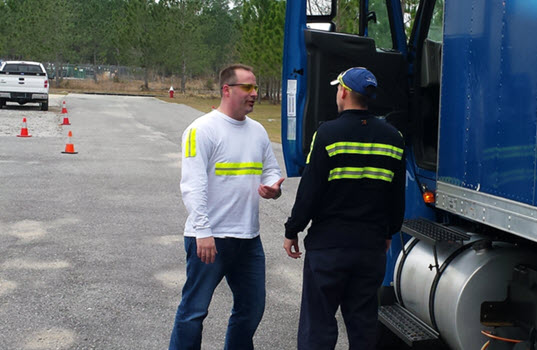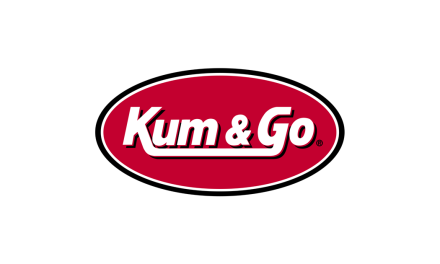Special from CarriersEdge
No fleet is immune when it comes to making sure the safety “ducks are in a row.” Any new fleet, regardless of size, must complete the New Entrant Safety Audit Program within the first 12 months of operation. It ensures a carrier has basic safety management controls in place to ensure compliance with applicable Federal Motor Carrier Safety Regulations (FMCSRs), Hazardous Materials Regulations (HMRs) and related record-keeping requirements.
Once that hurdle is met fleets need to be diligent about safety, especially in an age where trucking companies and truckers have a bulls-eye on them when it comes to accidents and litigation.
According to Billy Stover, Fleetworthy Solutions’ DOT regulatory compliance consultant, fleets of any size should take notice of the changing legal environment. Nuclear verdicts, though rare, carry a multi-million dollar price tag, and that impacts all those who are insured. “Someone has to pay for those verdicts and it ends up being many of those that are insured that have subpar compliance and safety practices in place. It’s why insurance companies are being more careful on who they insure.”
Fleetworthy works with carriers of many types and sizes on safety and compliance, plus audits and provides recommendations on ways to improve training and documentation. “With the legal environment—and the need for documentation coupled with comprehensive safety programs—we’ve continued to grow our business,” says Stover. “And it’s actually accelerated due to COVID-19—we can document everything digitally and help fleets stay compliant.”
While insurance agencies look at a myriad of factors to determine risk and rates—past claims, CSA scores, routes, mileage and safety technology being utilized—the biggest red or green light to a good rate and “insurability” is the safety culture of the company, and management’s commitment to that culture.
“Safety is driven from the top down,” says Stover. “Top management has to be committed and that means best practices are in place and measured to make sure your house is in order. And, everything must be documented.”
Tim Brewster, director of the loss prevention and recovery unit for National Interstate Insurance Company, agrees. “If it’s not documented, it never happened,” he says. “Plaintiff attorneys look for holes in a carrier’s business and if there is an accident, they’ll look to training, compliance, culture, etc. That’s why maintaining documented training is so important. It is vital to ensure the motor carrier has checkpoints in place to set drivers up for success and to protect the public. All drivers, regardless of experience, should be trained initially upon hire, recurrently and for remedial purposes. In my experience, organizations that have a weak or non-existent training program typically have other gaps throughout their safety and regulatory compliance programs. Having gaps within your program typically results in a carrier being less defensible.”
According to Brewster, culture is a combination of actions, attitudes, beliefs, and values. “The components of culture do not automatically exist within an organization and will not exist without a strong top-down and bottom-up approach. What’s more, they need to have structure and programs that assist with supporting these components,” he says. “An organization that lacks employee buy-in, has weak hiring practices, no training programs, non-existent policies and minimal accountabilities will never have a strong culture; it takes vision and hard work. A vital component to support a strong safety culture is having a sound training program that equips new hires for success, continues to educate throughout the employment lifecycle and assists with re-educating if an incident occurs.”
“When we work with carriers, we come up with a ‘plan to protect,’” says Stover. “We start with a DOT boot camp and it’s a combination of in-house training and online training. We work with CarriersEdge, which has a great library of online courses—many that support our DOT training. The key for any online training program is information retention. The way the courses are setup, drivers get engaged. They learn. Plus if a driver struggles with any part of the test, then retraining can be done to help the driver. Again, the key is documentation and a plan of action for further training if it’s required.”
For ongoing training, Fleetworthy encourages its clients to use a combination of in-house training when feasible, coupled with more online training from CarriersEdge. “The beauty of online training is it can be conducted remotely and drive time doesn’t have to be lost due to bringing the driver pool in for sit-down training.”
Brewster agrees, and feels online training is a good option. “Personally, no carrier should ever rely 100% on online training because it takes the engagement and relationship building factor out of training, which helps support culture. But, online training is a great supplemental offering. Online training can assist with streamlining and enhancing the onboarding process and can ensure there is an easy method to push ongoing and remedial training to drivers throughout the year.”
Brewster says recurrent training is a vital component of any safety program. “Without it, drivers are not equipped for success. Ongoing training should take place multiple times throughout the year with knowledge checks to ensure drivers understand and can retain the information.”
When working with fleets, Brewster says he offers these tips:
- Provide training throughout the year on trends identified, seasonality factors and topics that are needed to successfully operate, such as defensive driving, fatigue management, injury prevention, etc.
- Ensure training is not too long in length and then hit on several key points to continue to set drivers up for success. Retention of information is vital.
For those setting up their own safety and compliance department, Fleetworthy’s Stover suggests hiring a company to do an annual audit. “It’s a service we offer and it can help fleet managers sleep better at night knowing they’re either in compliance and safeguarded, or they have some action items. You just can’t assume you have your ducks in a row. You need to know. Otherwise if there is an incident and you arrive in court, you may be exposed.”
Likewise, your insurance carrier can be one of your biggest ambassadors. “Our goal is to assist with loss prevention and cost containment,” says Brewster. “The most successful trucking companies are receptive and willing to work closely alongside an insurance carrier’s loss prevention department to strengthen safety programs and regulatory compliance to minimize the likelihood of losses. If a loss occurs, it is vital a motor carrier proactively works alongside the claims department to contain costs to the best of their ability. It is all about controlling an outcome; this can be accomplished if you work closely with your insurance provider and have sound safety and regulatory compliance programs.”
National Interstate Insurance’s Top 5 Tips to Improve Insurability
- Sound hiring practices—Only hire qualified drivers and don’t deviate from your practices.
- Strong culture—Instill a culture that encompasses accountability, ownership of risk, buy-in from the top and bottom, and continuous improvement.
- Strong training programs—Ensure all drivers receive training effectively and make sure it’s well documented. Train initially upon hire, recurrently and remedially.
- Proactive use of technology—Embrace and use technology such as dual vision cameras and telematics. These are great tools to proactively identify unsafe behavior, which allows a motor carrier to coach and train, reducing the likelihood of a loss. Positive behavior should also be reinforced often.
- Continuous improvement—It is vital to continue raising the bar. The environment motor carriers operate in is changing rapidly meaning what worked yesterday may not work today. Regularly evaluate programs to determine effectiveness and take action as needed.
CarriersEdge is a leading provider of online driver training for the trucking industry. With a comprehensive library of safety and compliance courses, supported by advanced management and reporting functions, CarriersEdge helps hundreds of fleets train their drivers without sacrificing miles or requiring people to come in on weekends.









